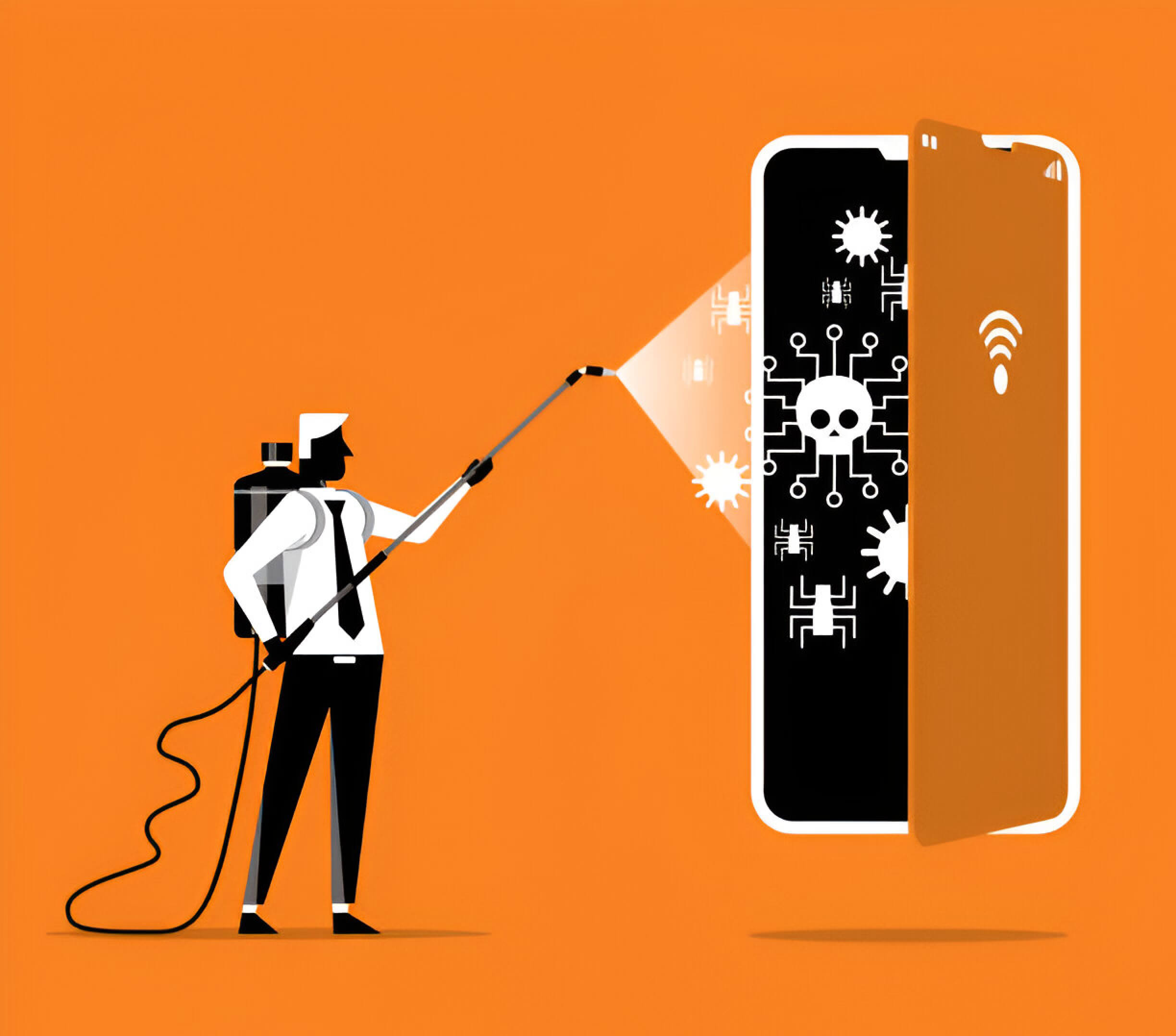In today’s digital age, the threat of mobile viruses looms large over smartphone users. These malicious programs can infiltrate our devices, compromising our data and disrupting our daily lives. As our reliance on mobile technology grows, so does the importance of understanding how these viruses operate, recognizing their symptoms, and knowing how to protect ourselves. This guide will explore the world of mobile viruses, offering practical advice on detection, removal, and prevention to keep your smartphone safe and secure.
What is a Mobile Virus and How Can It Infect Your Phone?
Mobile viruses, or malware, are malicious software programs designed to infiltrate and compromise smartphones and other mobile devices. These digital threats come in various forms, each with its method of infection and potential for harm. Common types include trojans, spyware, and ransomware, which can steal personal data, monitor user activity, or lock device access.
Smartphone viruses typically infect devices through seemingly innocuous means. Users may unknowingly download malicious apps from unofficial app stores, click on suspicious links in text messages or emails, or connect to unsecured Wi-Fi networks. Once installed, these viruses can operate silently in the background, potentially causing significant damage before detection.
Signs of a virus infection can include unexpected battery drain, unusual data usage, slow performance, or unfamiliar apps appearing on the device. Users might also notice strange pop-ups, unauthorized charges, or their phones behaving erratically.
To protect against mobile malware, it’s crucial to exercise caution when downloading apps, avoid clicking on suspicious links, and keep your device’s operating system and security software up-to-date. By understanding the nature of mobile viruses and remaining vigilant, users can significantly reduce their risk of falling victim to these digital threats.
How do you tell if your phone has a virus?
Identifying whether your phone has a virus is crucial for maintaining your device’s security and performance. Several telltale signs can indicate the presence of malware on your smartphone. One of the most common symptoms is unusual battery drain, where your phone’s battery life drastically decreases without apparent reason. Unexpected pop-ups on your screen, especially when you’re not using any apps, are another red flag.
Slow performance is also a vital indicator of a potential virus infection. It might be compromised if your phone suddenly becomes sluggish, takes longer to open apps, or frequently freezes. Additionally, keep an eye out for unfamiliar apps on your device. Malware often disguises itself as legitimate applications, so any app you don’t remember installing should be treated with suspicion.
Other symptoms may include unexplained data usage, strange text messages sent from your number, or your phone overheating more frequently than usual. By staying vigilant and recognizing these signs early, you can take prompt action to protect your device and personal information from potential threats.
What to Do When You Suspect a Virus on Your Phone?
When you suspect your phone has been infected with a virus, acting swiftly to minimize potential damage is crucial. Start by booting your device into safe mode, which turns off third-party applications and can prevent the virus from causing further harm. Next, immediately turn off any automatic downloads or app installations to prevent additional malicious software from entering your system.
Backing up important data is critical, but ensure you do this carefully to avoid transferring the virus to your backup. Once your data is secure, update your phone’s operating system to the latest version, as these updates often include security patches that can eliminate known viruses.
Finally, run a comprehensive antivirus scan using a reputable mobile security app. These scans can detect and remove most malware, helping to restore your phone’s health. Remember, if these steps don’t resolve the issue, seeking professional help from your device manufacturer or a trusted tech support service may be necessary.
Step-by-Step Process to Removing Viruses from Android Devices

Removing viruses from your Android device is crucial for maintaining its performance and protecting your personal information. Follow these steps to eliminate malware effectively:
- Enable Google Play Protect: This built-in security feature scans your device for harmful apps. Go to Google Play Store > Menu > Play Protect to ensure it’s activated.
- Uninstall suspicious apps: Review your installed applications and remove any unfamiliar or suspicious ones. To see a complete list, navigate to Settings > Apps & notifications.
- Clear cache and data: Clear the remaining apps’ cache and data to remove potential malware. Go to Settings > Apps & notifications > [App name] > Storage > Clear Cache/Clear Data.
- Update your Android OS: Ensure your device has the latest security patches by checking for system updates in Settings > System > Advanced > System update.
- Use a reputable antivirus app: Download a trusted antivirus application from the Google Play Store to thoroughly scan your device.
- Factory reset (last resort): Consider performing a factory reset if the virus persists. Remember to back up your important data first. Go to Settings > System > Reset options > Erase all data (factory reset).
Following these steps, you can effectively remove viruses from your Android device and restore its optimal performance.
Step-by-Step Process to Removing Viruses from iOS Devices
Removing viruses from iOS devices is a straightforward process that can be accomplished through several steps. First, ensure your device is running the latest version of iOS, as updates often include security patches that can eliminate malware. If an update is available, install it immediately.
Next, review and remove any suspicious configuration profiles from your device. Go to Settings > General > Profiles & Device Management and delete any unfamiliar profiles. These can sometimes be gateways for malicious software.
If the issue persists, try resetting all settings on your device. This can be done by navigating to Settings > General > Reset > Reset All Settings. This action won’t delete your data but will return all settings to their defaults.
Restoring your device from a recent backup can be effective for more stubborn infections. Use iCloud or iTunes to restore your device to a point before the virus infection occurs. Remember to only use backups from trusted sources.
As a last resort, if none of the above steps work, you may need to perform a factory reset. This will erase all data on your device, so ensure you have a backup before proceeding. After the reset, set up your device as new and only reinstall essential apps from the App Store.
Following these steps, you can effectively remove most viruses from your iOS device and restore it to proper functioning.
Tips to Protect Your Phone from Future Virus Infections
Prevention is the most effective strategy for protecting your phone from virus infections. By implementing mobile security best practices, you can significantly reduce the risk of malware infiltrating your device. One crucial tip is to avoid downloading apps from third-party app stores, as these platforms often lack the stringent security measures in official app stores.
Regular updates are another essential aspect of mobile security. Ensure that your phone’s operating system and all installed apps are always up to date, as these updates often include critical security patches. Additionally, using strong, unique passwords for your accounts and enabling two-factor authentication adds extra protection against unauthorized access.
Installing reputable antivirus software on your mobile device can provide real-time protection against emerging threats. These programs can scan downloads, detect suspicious activities, and alert you to potential security risks. Combining these preventive measures allows you to create a robust defense against mobile viruses and enjoy a safer, more secure smartphone experience.
Top Antivirus Apps for Mobile Devices
Installing a reliable antivirus app is essential when protecting your mobile device from cyber threats. Today’s market offers a variety of options, both free and paid, to suit different needs and budgets. Top-rated mobile antivirus software typically includes real-time protection, malware scanning, and safe browsing capabilities.
Many of the best security apps go beyond essential antivirus functions, offering additional tools like VPN services, password managers, and anti-theft features. While free antivirus apps can provide adequate protection for casual users, paid versions often offer more comprehensive security suites with advanced features and regular updates.
When choosing an antivirus app, consider factors such as system impact, battery consumption, and user interface. Popular options include Bitdefender Mobile Security, Norton Mobile Security, and Kaspersky Internet Security for Android. These apps consistently rank high in independent tests for their effectiveness in detecting and removing malware.
Remember, while antivirus apps are crucial, they should be part of a broader mobile security strategy that includes regular software updates, cautious app installation practices, and awareness of potential phishing attempts.










